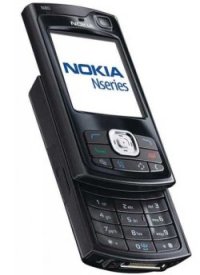 Mobile technology has come a long way from those foot-long phones hooked up to a shoe box sized battery pack. With bluetooth, GPS, cameras, and Internet connections, mobile phones nowadays pack a lot of power. How can we put this functionality to use?
Mobile technology has come a long way from those foot-long phones hooked up to a shoe box sized battery pack. With bluetooth, GPS, cameras, and Internet connections, mobile phones nowadays pack a lot of power. How can we put this functionality to use?
Mobile Phones for Personal Data
The technology to collect data about ourselves is available. We can record where we have been with GPS, and with cameras, we can keep track of what we have seen. We can then upload this data regularly with a persistent Internet connection, and what we end up with are travel patterns and live image streams.
Putting Personal Data to Use
Now things start to get super interesting. The challenge is to figure out what to do with all the data.
- What do you do with a year’s worth of location traces or a year’s worth of pictures taken every few minutes?
- What story can you tell and what inferences can you make?
- Can you combine data from the phone with existing databases e.g. weather, environment, or traffic?
- What type of visualization is more effective in making data available to non-expert users?
In the coming weeks I will be investigating these questions on this subject of self-surveillance, and if you don’t mind, will be bringing all of you along for the ride (towards completing my dissertation :).
What would you do with location data or a continuous image stream from a year of your life?


Further reading & data for visualisation:
The Microsoft SenseCam:
http://research.microsoft.com/sendev/projects/sensecam/
And the Flickr 365 (1 photo a day for a year) projects:
http://photojojo.com/content/tutorials/project-365-take-a-photo-a-day/
Nathan,
I too am interested in these topics. I would also point you to Steve Mann’s notion of “sousveillance,” a neologism that highlights *who* is doing the watching. Surveillance is about us being watched by them. In sousveillance, the us we watching ourselves. I am struggling that any treatment of these trace data sources (our phones, our RFID badges, our credit cards, our printouts we send to a work printer) requires an acknowledgment of the very political nature of this data. In many cases, the company, the government, or some financial analyst (in bentonville arkansas) or CSR (in Bangalore) is the only one with the access to the data…. For many of these sources of information, you, the lowly user can’t have your own data(!). And this is especially true if you’re not highly motivated (and geeky enough) to glean what you can.
The above is not a “statistics problem” or a “visualization problem” per se. But it’s there, lurking just below the surface. The data a designer can get is often about his or her own life, not about other’s lives and interactions. And visualization (and statistics) is often comparative. It’s great to see what’s different between how I use my phone (or camera, or email) and how you do it, or my mom does it, or a Chinese 13-yr old script kiddie. Seeing my data is comparison with others starts to give a user the chance to actually see (and reflect on) their own rhythms and routines.
Note: These are notes for my own thesis thinking… Sorry if they’re rambling. But thanks for having a site for interesting discussions.
@Zach: mm hm. there’s definitely a social aspect to personal data. there are complicated problems like data privacy and integrity that come into play, which makes it that much more interesting. aggregation and anonymizing becomes important.
location data for example, is naturally very private information that most would not be willing to share, much less make public, but there are things that a user could be willing to divulge like how fast they were driving or how many fast food restaurants they drove past…